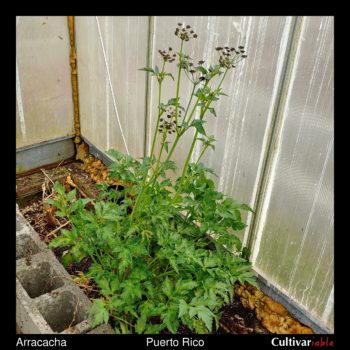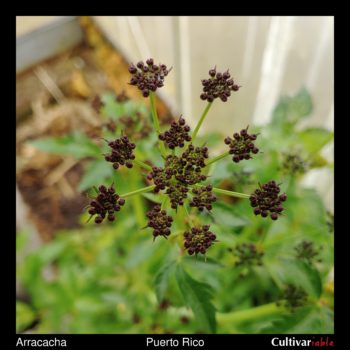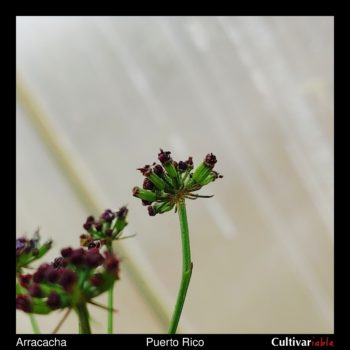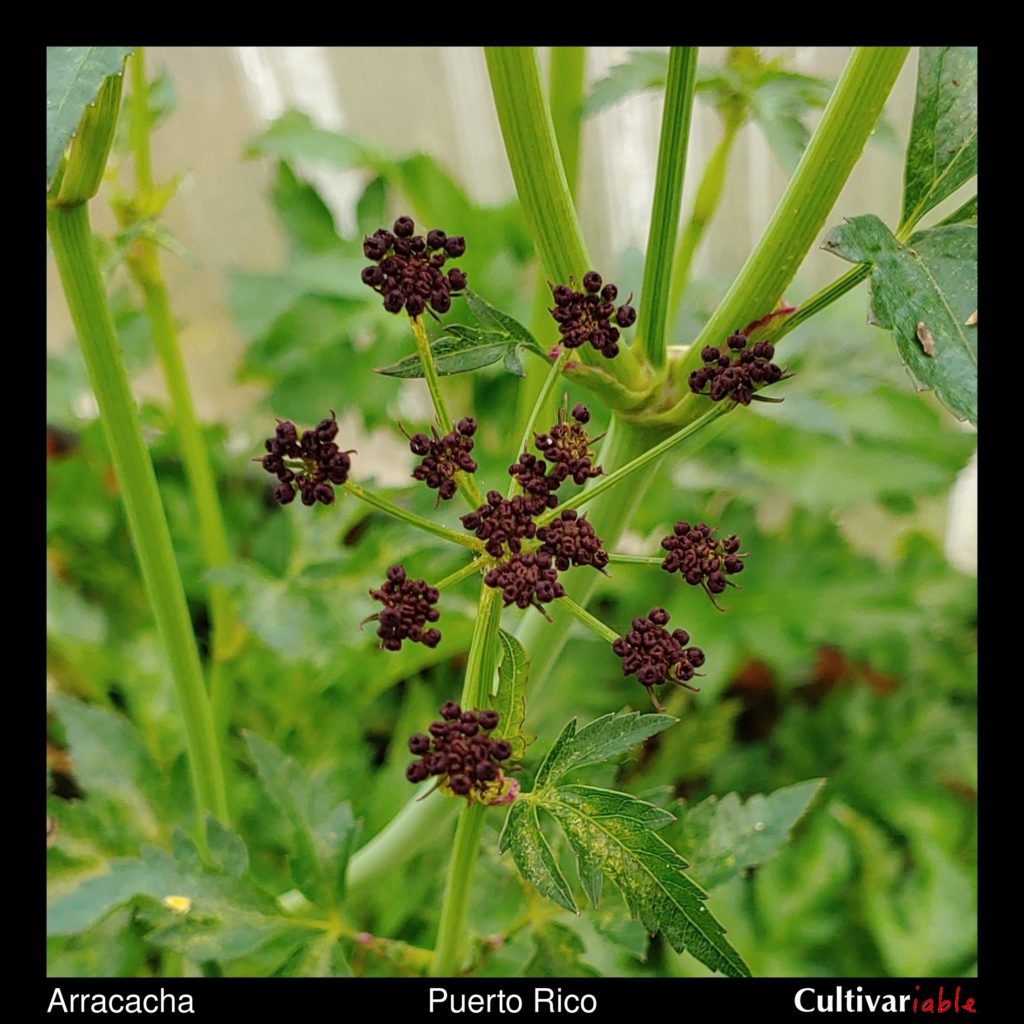arracacha (Arracacia xanthorrhiza), Blog
Arracacha: Flogged into Flowering

If I had to pick one indispensable personality trait for the plant breeder, it would be patience. It is one of the few areas of endeavor I can think of where doing something the same way, repeatedly, until it works, is a viable strategy. It is surprising how often I succeed with a plant at just the moment that I have finally given up on it. Nature doesn’t work on our schedule and the variables are usually numerous and unknown or uncontrollable.
Five years ago, I set out to get seed from arracacha. According to the literature, the most reliable way of forcing the plants to flower is by dehydrating the crowns by 30% and then replanting them. I tried that with the single Puerto Rican variety available in the USA and the plants either lived or died, but definitely did not flower. I tried to grow the plants in other ways as well: indoors, outdoors, in soils rich and poor, with a break for vernalization and without, etc. Nothing worked.
Arracacha is a perennial plant and it has been suggested that older plants might also be more likely to flower, so I began a greenhouse project, where I kept the plants growing over the winter and also limited their water severely. Four years in, most of the plants were still alive but still not flowering. The plants have now outlasted the aging plastic greenhouse that they were planted in and I had resolved to demolish the greenhouse this year. So, last summer, I decided to make one last-ditch attempt. In July, I stopped watering them entirely. They are growing in beds on the ground in the greenhouse and they must have very large root systems by now. The plants didn’t appear to suffer much from the lack of water and kept growing through the winter. I last checked on them in April and some of the plants had died, while others were looking rather wilted. I figured their end could not be far off and I planned to tear down the greenhouse in June, so I stopped looking at them.

Last weekend, I was ready to tear down the greenhouse. I opened the door and was immediately confronted with arracacha flowers! I didn’t even expect the plants to be alive. The greenhouse had been completely shut up, so it was probably reaching the 90s or 100s during the day, and the plants had not been watered for a year. In fact, most of them were dead. Only two plants remained, but they had both sent up inflorescenses. Needless to say, I have delayed demolition of the greenhouse!
There is not a lot of information available about producing arracacha seed, but it has been done fairly regularly in South America. Most domesticated arracacha varieties are thought to be tetraploid. Those from which seed has been obtained also appear to be self-compatible. That leaves a considerable knowledge gap, since seed has only been collected from a few varieties. It is possible that self-compatibility is the exception rather than the rule. Friends in Peru were able to get seed from only one variety of domesticated arracacha even though they grow several varieties. Another friend in Australia has had a variety flower repeatedly, but without any seed set. These experiences temper my optimism a bit, but I am pleased just to see arracacha flowers in person. I will, of course, be much happier if I also get viable seed.

I am now giving these plants plenty of water and hand pollinating them twice a day. The trick with arracacha is probably to pollinate between umbels, because the central umbels are staminate (male only) and the outer flowers on the outer umbels are perfect, but become receptive days before anthesis (the beginning of pollen release). I hope that, between my efforts and the assistance of insects, I will get some viable seed. To the best of my knowledge, seed has never been collected from the Puerto Rican variety. As reported last year, I now have a number of plants grown from seed of a Peruvian variety, so it would be great to have a second line of plants from a variety that is presumably genetically distinct. There is a lot of potential for diversity in the cross of two heterozygous polyploids, probably more than enough to keep me busy for years.
There are some signs that ovaries are already swelling on some of the older umbels, which I would normally take as a sign of successful pollination, but my Australian friend reports seeing the same thing before the flowers ultimately dry down to nothing. All I can do is pollinate and hope for the best. Hopefully in another 4-6 weeks, I will have something to show for it.


How are you. I am looking for Arracacha seed do you have it in stock.
Thank you
Regards
Jorge.
The plants are still flowering, but they have not yet produced any seeds, so I am not optimistic. Maybe next year.
Any update on this, did you manage to get viable seed in the end?
Unfortunately, no. I observed very little pollen. It may be that there is male sterility in arracacha. I now know the conditions under which it will flower though, so I have put multiple varieties together for next year. Maybe I’ll get lucky and find a pollinator among them.
I think this might be a problem for arracacha in general. I grew up in Brazil and as far as I remember, propagation by seed is quite rare.
Bonjour je cherche la plante et les graines arracacha xanthorriza en avez vous?